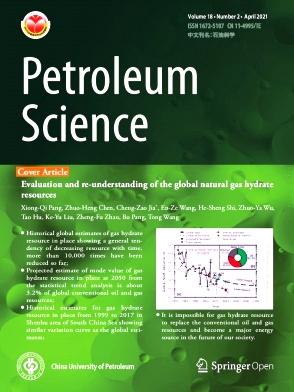Sub-lacustrine debrite system: Facies architecture and sediment distribution pattern
IF 6
1区 工程技术
Q2 ENERGY & FUELS
引用次数: 0
Abstract
The deep-water systems in different types of sedimentary basins exhibit significant variability. Current knowledge of deep-water deposition is mainly derived from deep-marine turbidite systems. However, the characteristics and differences of sub-lacustrine gravity flow deposition systems have been a research focus in the fields of sedimentology and petroleum geology. This study investigates the facies architecture, depositional processes, and sediment distribution patterns of a sub-lacustrine debrite system in the Eocene Dongying Rift of the Bohai Bay Basin, China, through the analysis of integrated core data, 3-D seismic data, and well-log data. Nine facies have been identified within the debrite system, representing various depositional processes such as sandy debris flow, muddy debris flow, turbidity currents, sandy slide, sandy slide/slump, and mud flow. Our research indicates that the sub-lacustrine system is primarily influenced by debris flow rather than turbidity currents, as supported by facies quantification, interpretation, and flow rheology analysis. Additionally, we have identified five basic facies building blocks in debrite systems, including slide masses, slump masses, debrite channels, debrite lobes, and turbidite sheets. We have also elucidated and proposed detailed sedimentary processes, flow transport, and transformation within the sub-lacustrine system through analysis of flow origins, facies sequences, and distribution characteristics. Our findings highlight the evolutionary progression from delta-front collapse to sandy slide/slump, sandy debris flow, and finally muddy debris flow. The efficient generation of turbidity currents from parental landslides on sand-prone slopes is deemed unlikely due to rift-basin morphology and transport distances. The formation of the five basic facies building blocks is closely linked to depositional processes and dominant flow types. Consequently, we present a deep-water depositional model for sub-lacustrine debrite systems, focusing on flow dynamics, sediment distribution patterns, and basin morphology within deep lacustrine rifts. This model offers valuable insights into the variability of deep-water deposition in diverse basin settings and aids in predicting lithologic reservoirs during deep-water hydrocarbon exploration.
求助全文
约1分钟内获得全文
求助全文
来源期刊

Petroleum Science
地学-地球化学与地球物理
CiteScore
7.70
自引率
16.10%
发文量
311
审稿时长
63 days
期刊介绍:
Petroleum Science is the only English journal in China on petroleum science and technology that is intended for professionals engaged in petroleum science research and technical applications all over the world, as well as the managerial personnel of oil companies. It covers petroleum geology, petroleum geophysics, petroleum engineering, petrochemistry & chemical engineering, petroleum mechanics, and economic management. It aims to introduce the latest results in oil industry research in China, promote cooperation in petroleum science research between China and the rest of the world, and build a bridge for scientific communication between China and the world.
 求助内容:
求助内容: 应助结果提醒方式:
应助结果提醒方式:


